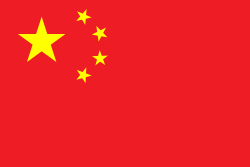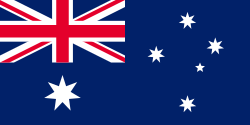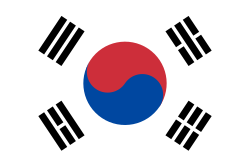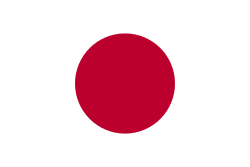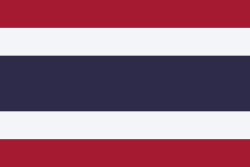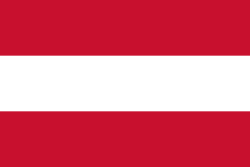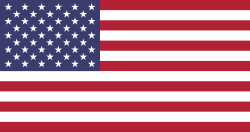Ray Ho
| Ray Ho | |
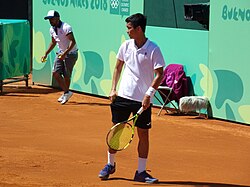 | |
| Ho 2018 bei den Jugend-Olympischen Spielen | |
| Nation: | |
| Geburtstag: | 13. Februar 2000 (25 Jahre) |
| Größe: | 188 cm |
| Gewicht: | 85 kg |
| Spielhand: | Links, beidhändige Rückhand |
| Preisgeld: | 99.807 US-Dollar |
| Einzel | |
| Karrierebilanz: | 0:0 |
| Höchste Platzierung: | 715 (18. Juli 2022) |
| Aktuelle Platzierung: | 1032 |
| Doppel | |
| Karrierebilanz: | 2:0 |
| Höchste Platzierung: | 124 (12. August 2024) |
| Aktuelle Platzierung: | 135 |
| Letzte Aktualisierung der Infobox: 13. Januar 2025 | |
| Quellen: offizielle Spielerprofile bei der ATP/WTA (siehe Weblinks) | |
Ray Ho (* 13. Februar 2000) ist ein taiwanischer Tennisspieler.
Karriere
Zwischen 2013 und 2018 spielte Ho auf der ITF Junior Tour. Dabei nahm er 2018 an drei von vier an Grand-Slam-Turnieren teil, wo sein bestes Resultat im Einzel das Viertelfinale bei den Australian Open ist. Im Doppel zog er mit seinem Landsmann Tseng Chun-hsin ins Finale der French Open ein, wo sie Ondřej Štyler und Naoki Tajima unterlagen. In allen drei Disziplinen der Olympischen Jugend-Sommerspiele schied er zum Auftakt aus. Im Einzel gewann er zwei und im Doppel einen Titel der Kategorie Grade 2. In der Junioren-Rangliste erreichte er mit Platz 18 seine höchste Notierung.
Bei den Profis spielte Ho ab 2019 regelmäßig. In seinem ersten Jahr zog er auf der ITF Future Tour in sein erstes Finale ein. Im Doppel war er erfolgreicher: gleich drei Titel gewann er. Zudem erreichte er auf der ATP Challenger Tour in Kaohsiung sein erstes Halbfinale. Bis Ende 2022 spielte er wieder ausschließlich Futures, von denen er bis dato zehn gewonnen hatte. Erstmals zog er dadurch in der Weltrangliste in die Top 300 des Doppels ein. Im Einzel verlor Ho auch sein zweites Finale, sein Karrierehoch von Rang 715 hatte er Mitte 2022 erreicht. Im September 2022 gab er sein Debüt für die taiwanische Davis-Cup-Mannschaft in der Begegnung gegen Hongkong, wo er sein Match im Doppel gewann. Mit verschiedenen Partnern gewann er auch 2023 acht weitere Futures, bevor er gegen Ende des Jahres auch wieder bei Challengers antrat. Mit dem Australier Matthew Romios zusammen triumphierte er in Zhangjiagang das erste Mal bei einem Challenger. Mit selbigem Partner zog er in Matsuyama ins Halbfinale ein und unterlag in seinem zweiten Endspiel in Guangzhou, wodurch er in der Rangliste bis Platz 173 stieg.
Erfolge
| Legende (Anzahl der Siege) |
| Grand Slam |
| ATP Finals |
| ATP Tour Masters 1000 |
| ATP Tour 500 |
| ATP Tour 250 |
| ATP Challenger Tour (7) |
Doppel
Turniersiege
| Nr. | Datum | Turnier | Belag | Partner | Finalgegner | Ergebnis |
|---|---|---|---|---|---|---|
| 1. | 2. September 2023 | Hartplatz | 6:3, 6:4 | |||
| 2. | 14. April 2024 | Hartplatz | 6:2, 6:4 | |||
| 3. | 18. Mai 2024 | Hartplatz | 6:2, 6:2 | |||
| 4. | 11. Januar 2025 | Hartplatz | 6:4, 7:65 | |||
| 5. | 18. Januar 2025 | Hartplatz | 6:3, 6:4 | |||
| 6. | 1. März 2025 | Hartplatz | 6:2, 6:4 | |||
| 7. | 26. April 2025 | Hartplatz | 6:3, 7:66 |
Weblinks
- ATP-Profil von Ray Ho (englisch)
- ITF-Profil von Ray Ho (englisch)
- ITF-Junioren-Profil von Ray Ho (englisch)
- Davis-Cup-Statistik von Ray Ho (englisch)
| Personendaten | |
|---|---|
| NAME | Ho, Ray |
| KURZBESCHREIBUNG | taiwanischer Tennisspieler |
| GEBURTSDATUM | 13. Februar 2000 |
Auf dieser Seite verwendete Medien
Pictograms of Olympic sports - Tennis. This is unofficial sample picture. Images of official Olympic pictograms for 1948 Summer Olympics and all Summer Olympics since 1964 can be found in corresponding Official Reports.
Chinese Taipei Olympic Flag. According to the official website of Chinese Taipei Olympic Committee, Blue Sky(circle) & White Sun(triangles) above the Olympic rings is neither the National Emblem of the Republic of China, nor the Party Emblem of Kuomintang (KMT), but a design in between, where the triangles do not extend to the edge of the blue circle, as registered at International Olympic Committee in 1981 and digitally rendered in 2013. Besides, the blue outline of the five-petaled plum blossom is broader than the red one. Moreover, the CMYK code of the blue one and the Blue Sky & White Sun is "C100-M100-Y0-K0", and different from the Olympic rings (C100-M25-Y0-K0). Note that it's the only version recognized by IOC.
Chinese Taipei Olympic Flag. According to the official website of Chinese Taipei Olympic Committee, Blue Sky(circle) & White Sun(triangles) above the Olympic rings is neither the National Emblem of the Republic of China, nor the Party Emblem of Kuomintang (KMT), but a design in between, where the triangles do not extend to the edge of the blue circle, as registered at International Olympic Committee in 1981 and digitally rendered in 2013. Besides, the blue outline of the five-petaled plum blossom is broader than the red one. Moreover, the CMYK code of the blue one and the Blue Sky & White Sun is "C100-M100-Y0-K0", and different from the Olympic rings (C100-M25-Y0-K0). Note that it's the only version recognized by IOC.
Flag of Australia, when congruence with this colour chart is required (i.e. when a "less bright" version is needed).
See Flag of Australia.svg for main file information.Flagge Österreichs mit dem Rot in den österreichischen Staatsfarben, das offiziell beim österreichischen Bundesheer in der Charakteristik „Pantone 032 C“ angeordnet war (seit Mai 2018 angeordnet in der Charakteristik „Pantone 186 C“).
Flagge des Vereinigten Königreichs in der Proportion 3:5, ausschließlich an Land verwendet. Auf See beträgt das richtige Verhältnis 1:2.
Flagge des Vereinigten Königreichs in der Proportion 3:5, ausschließlich an Land verwendet. Auf See beträgt das richtige Verhältnis 1:2.
Autor/Urheber: Gastón Cuello, Lizenz: CC BY-SA 4.0
Ho Ray in Buenos Aires 2018


